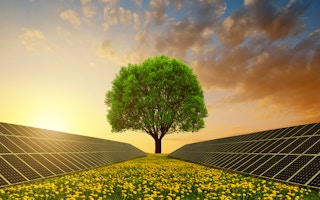2016 was a successful year for clean energy. How will 2017 shape up? I make five predictions based on last year’s numbers and trends.
My first prediction is that we will see solar energy prices plummet further. Last year brought astonishingly low tariffs for solar generation. This was a pleasant surprise. No one, including Bloomberg New Energy Finance (BNEF), saw it coming so fast. Solar prices at various government-led auctions hit extraordinarily low levels.
Records were broken each month, especially in developing countries, as prices plunged making solar generation cheaper than coal in some countries. The first low result was in January to as low as $64 per MWh in India and later in the year to $29 per MWh in Chile and $24 per MWh in the United Arab Emirates.
The price continues to fall. On 10 February, at an auction in India’s Madhya Pradesh state, the price for 750 MW was about $45 per MWh.
“
To those who still believe solar energy and storage prices will never wipe out investments in fossil fuels, please open your eyes and look around. The world is changing faster than we all thought.
This year, fossil fuels can expect even more competition. The average cost of coal generation is likely to increase from $60 per MWh to $65-$100 per MWh as stricter environmental regulations and higher risk will be assigned to the investment. The average cost of both wind and solar is about $60-$70 per MWh, and both prices are rapidly falling. Also, let’s not forget that it takes at least five years to build a coal plant, compared to less than six months for a solar plant.
I believe solar prices in some auctions will drop below $25 per MWh in 2017. One auction to watch is in Saudi Arabia, where the price could dip below $30 per MWh. The financing of coal plants could be viewed as infeasible by 2020 or even earlier. Many old coal plants will shut down as their role as base-load providers will change when daytime electricity demand is met by solar backed up by large batteries.
Cheaper batteries
Second prediction: batteries will get even cheaper. BNEF anticipated a 10-15 per cent decline in lithium-ion battery prices for 2016, but they ended up dropping by about 22 per cent due to increased competition and growing awareness of battery-based storage. Global battery storage doubled in 2016 to about 750 MW.
With Tesla’s Gigafactory now operating with a production capacity of 35,000 MWh by 2020, prices will drop even faster this year. According to Bloomberg they could drop from $350 per KWh in 2016 to about $200 per kWh by 2020. The US Department of Energy’s price target is $125 per kWh by 2020.
Some pundits argue the price will reach $100 per kWh in 2020, but I predict that battery prices will fall even more to $75 KWh by that time.
Thirdly, we can expect global sales of electric vehicles to skyrocket this year. Already, they’re selling extremely well. In 2016, global sales of electric vehicles topped 700,000 units, 30 per cent greater than BNEF’s prediction of 550,000 units. Of the total, 351,000 electric vehicles were sold in the People’s Republic of China (PRC), up 85 per cent from 2015. According to the International Energy Agency (IEA), more than 223 million electric two-wheelers were operating in the PRC in 2016. The IEA anticipates that by 2040 half of new cars sold worldwide will be electric.
Some experts believe electric vehicles will account for half of all sales by 2030. In 2017, I’m confident that global sales will top 1.5 million.
Solar will be king
Fourth, solar will become the pre-eminent form of renewable energy. BNEF rightly predicted that solar energy generation would be cheaper than wind in 2016. About 70,000 MW of new solar generation (56,000 MW in 2015) and 59,000 MW of new wind power (62,000 MW in 2015) came online in 2016.
Investment in solar was propelled by massive technical innovation, which brought down the price of a module to $0.48 per watt in 2016, from $0.74 in 2013 and about $5 in 2000. My take is that in 2017 wind may lose its popularity permanently over solar, and demand will drop dramatically as battery prices drop. The market to watch is Australia.
Finally, with battery prices expected to fall further this year, I expect investments in renewable energy to be greater than for any other energy technology in most parts of the world, and without subsidies. Last year’s investments were 15-20 per cent lower than the record $348.5 billion registered in 2015. This may be partly due to the low prices for solar as volumes for solar, wind and battery saw huge increases from 2015.
To those who still believe solar energy and storage prices will never wipe out investments in fossil fuels, please open your eyes and look around. The world is changing faster than we all thought.
The rise of clean energy is irreversible, and this is crucial for the fight against climate change. Fossils fuels should be left underground, where they belong.
Sohail Hasnie is Principal Energy Specialist, Central and West Asia Department at the Asian Development Bank. This post is republished from the ADB blog.











